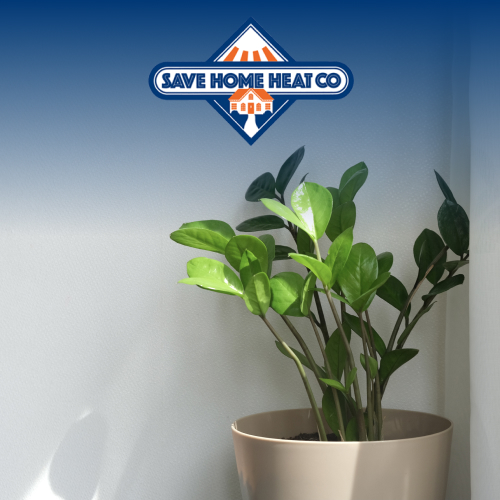How Would an Energy Recovery Ventilator Fit In Your Home?
When it comes to indoor air quality upgrades, most homeowners think of humidifiers and high efficiency air filters, maybe even air purifiers—and with good reason. In our region, these IAQ products can often provide a broad range of health and comfort benefits, and more. In residential applications, they are a great fit for homes that are heated by a forced air furnace, and they can even be installed in many homes that don’t have an existing ducting system.
A product that continues to earn a niche in the home comfort field are energy recovery ventilators, commonly known as ERVs. Energy recovery ventilators are also referred to as fresh air ventilators. Different terminology for the same product. Simply put, an ERV is a system that allows you to expel stale indoor air to the outdoors while bringing fresh outside air into your home at the same time, with a special feature.

The bonus feature that ERVs bring to the table is that they preserve the heat and the humidity in your home, in the process. As homes continue to be built tighter and more energy efficient, and indoor air pollution concerns continue to gain momentum, an ERV could be an important part of your indoor air quality strategy for your home. Our team at Save Home Heat Company worked with these products for several years in the late 1970s and early ‘80s, and now they have returned to claim a permanent place in our industry.
 In this post, we’ll take a closer look at how the whole-house ERVs that our team installs, from Lennox Industries, connect to an existing furnace system or to an independent, ducted IAQ system, along with how these products connect to the outdoors. Lennox ERVs are rated for homes with up to approximately 3,800 square feet of finished space.
In this post, we’ll take a closer look at how the whole-house ERVs that our team installs, from Lennox Industries, connect to an existing furnace system or to an independent, ducted IAQ system, along with how these products connect to the outdoors. Lennox ERVs are rated for homes with up to approximately 3,800 square feet of finished space.
What Is An ERV?
An energy recovery ventilator is a relatively compact, sturdy, insulated cabinet that houses two fans, a specially designed heat exchanger, related controls, and a standard air filter. It has four separate round duct connections that enable it to connect to the outdoors and also allow it to interface with a home’s ducted comfort system.

During normal operation, using both fans, the 2-way heat exchanger in the ERV transfers heat (or cooling during the summer) and humidity from the stale, outgoing indoor air, to the fresh, incoming outside air.
ERVs can often be easily connected to a central ducting system, such as is used with a forced air gas furnace or a central heat pump system employing an air handler. They can also be installed as part of an independent, ducted IAQ system serving all or select areas in a home. This latter approach can be a great air quality solution for homes that employ products such as a hot water boiler or a mini-split heat pump system.
The primary benefits of ERVs include:
- An energy efficient way to provide year-round, whole-house ventilation and fresh air for your home. A great fit for houses that stay closed up for much of the year, running the AC thru most of the summer and then closing up tight for the winter – and in general, for many tighter homes during the heating season
- Effectively provides natural ventilation without having to open windows and doors wide – which can invite lots of seasonal outdoor allergy triggers into your home.
- An option for people who want to bring fresh outside air into their home, but prefer to keep windows and doors closed, whether for security, outdoor noise, or other reasons
- An energy efficient means for bringing fresh air into your home, one that doesn’t place additional load to the heating or cooling system
- A 100% non-ozone producing IAQ product
ERVs vs. HRVs
Since these types of fresh air ventilation products first started appearing in the residential market approximately 40+ years ago, there have been advancements in the types of materials used in the heat exchanger core. This has led to the development of two different but very similar products, the ERV and the HRV (Heat Recovery Ventilator). Without getting too deep into the weeds, the heat exchanger cores in these two products are made of quite different materials. In the Denver-Boulder area, our team recommends ERVs due to their ability to effectively transfer humidity, as well as temperature.
During ERV Operation
Looking closer at the airflow process involved in ERV operation, while your furnace or air handler is operating, the ERV diverts indoor air from the main ducting return-air stream before it reaches the furnace, expelling that air to the outdoors, while simultaneously bringing in fresh outside air. As mentioned above, heat (or cooling) and humidity from the outgoing air is transferred in the process, and the moderated, incoming fresh outside air is then introduced into the ducting system before going through the furnace filter.
Is a Whole-House ERV Compatible With Other IAQ Products?
 As alluded to above, in short, the answer to the above question is “Absolutely!” An ERV can be a valuable part of a whole-home IAQ strategy incorporating central humidification, enhanced air filtration, and air purification. The right influx of moderated fresh outside air that an ERV can supply could be the final piece to the indoor air quality puzzle needed for your family and your home.
As alluded to above, in short, the answer to the above question is “Absolutely!” An ERV can be a valuable part of a whole-home IAQ strategy incorporating central humidification, enhanced air filtration, and air purification. The right influx of moderated fresh outside air that an ERV can supply could be the final piece to the indoor air quality puzzle needed for your family and your home.
Connecting a Whole-House ERV to an Existing Furnace System
When installing an ERV on an existing forced air heating system (furnace or central heat pump) the unit is typically located near the furnace or air handler, just like most other IAQ products. It must be located adjacent to the main return-air ducting, and also able to be connected to the outdoors by means of a pair of round pipes (for outgoing and incoming air).
 The two connections from the ERV to the outdoors are made using round sheet metal pipes between 5” and 7” in diameter (depending on the installation). These two pipes terminate to the outdoors through sidewall weather hoods that are made for this application. Connecting the ERV to the home’s ducting system are two more round pipes that are similar in size. Backdraft dampers and balancing dampers are installed in appropriate locations in the piping to keep unwanted outside air out of the system when it is not operating, and to allow fine tuning of airflow in the system.
The two connections from the ERV to the outdoors are made using round sheet metal pipes between 5” and 7” in diameter (depending on the installation). These two pipes terminate to the outdoors through sidewall weather hoods that are made for this application. Connecting the ERV to the home’s ducting system are two more round pipes that are similar in size. Backdraft dampers and balancing dampers are installed in appropriate locations in the piping to keep unwanted outside air out of the system when it is not operating, and to allow fine tuning of airflow in the system.
’Partially Dedicated’ Central ERV Installations
In cases where we connect to an existing central ducting system, but there is a specific area or areas in the home that you’d like to prioritize exhausting indoor air from (kitchen, laundry room, rec room, workshop, etc.), there are “Partially Dedicated” ducting options that allow you to exhaust indoor air directly from those locations, while still delivering incoming fresh air to the furnace’s return-air ducting. A good item to keep in mind for central ERV installations where you want to address specific areas of concern.

With a Furnace

Without a Furnace
ERVs For Homes That Don’t Have an Existing Ducting System

Room Applications Don’t Need an Air Handler
When installing an entirely dedicated ERV system (no additional IAQ products) for a single room or very limited size area, an air handler is often not needed to handle air circulation for this fresh air upgrade. In these cases, the fans inside the ERV unit do double duty, handling all indoor and outdoor air circulation. In this type of system, great care must be taken in designing and installing the new ducting as simply as possible, along with paying close attention to the limits of the ERV’s fans and not overtaxing their capabilities.
Expertly Installing ERVs in the Denver-Boulder Metro Area
In these days of steadily growing home energy consciousness, an energy recovery ventilator can be a great solution for those who feel the need for a regular influx of fresh air into their homes, and also an excellent complement for other central IAQ products. In the Boulder-Denver area, please contact our friendly team at Save Home Heat today for highly informative, low-pressure, professional advice and recommendations for an ERV system or other IAQ upgrades that are the right match for you and your home. Installation quotes are always free, with zero obligation.
low-pressure, professional advice and recommendations for an ERV system or other IAQ upgrades that are the right match for you and your home. Installation quotes are always free, with zero obligation.
Please contact me to schedule an ERV or other IAQ product install quote!




